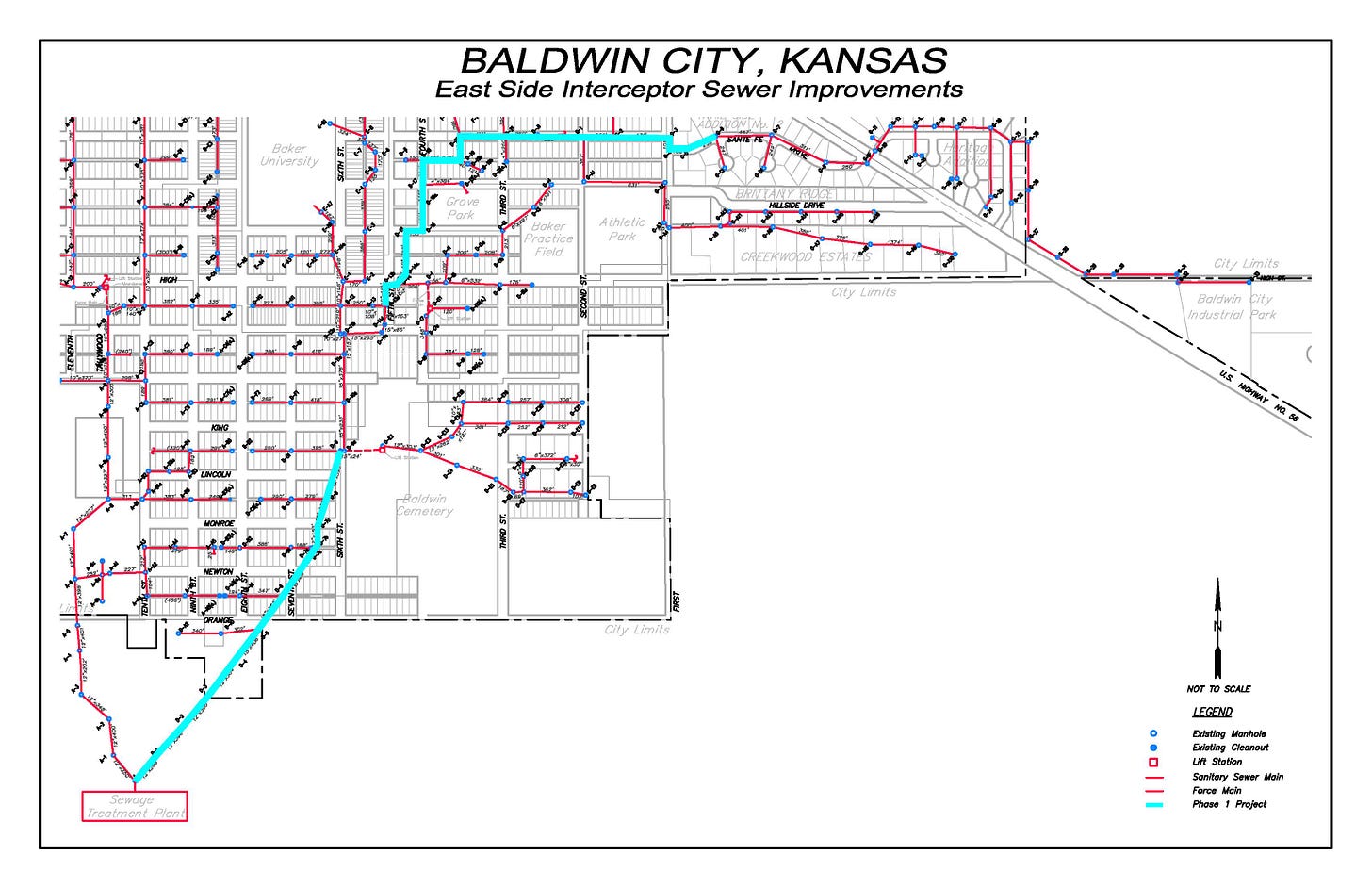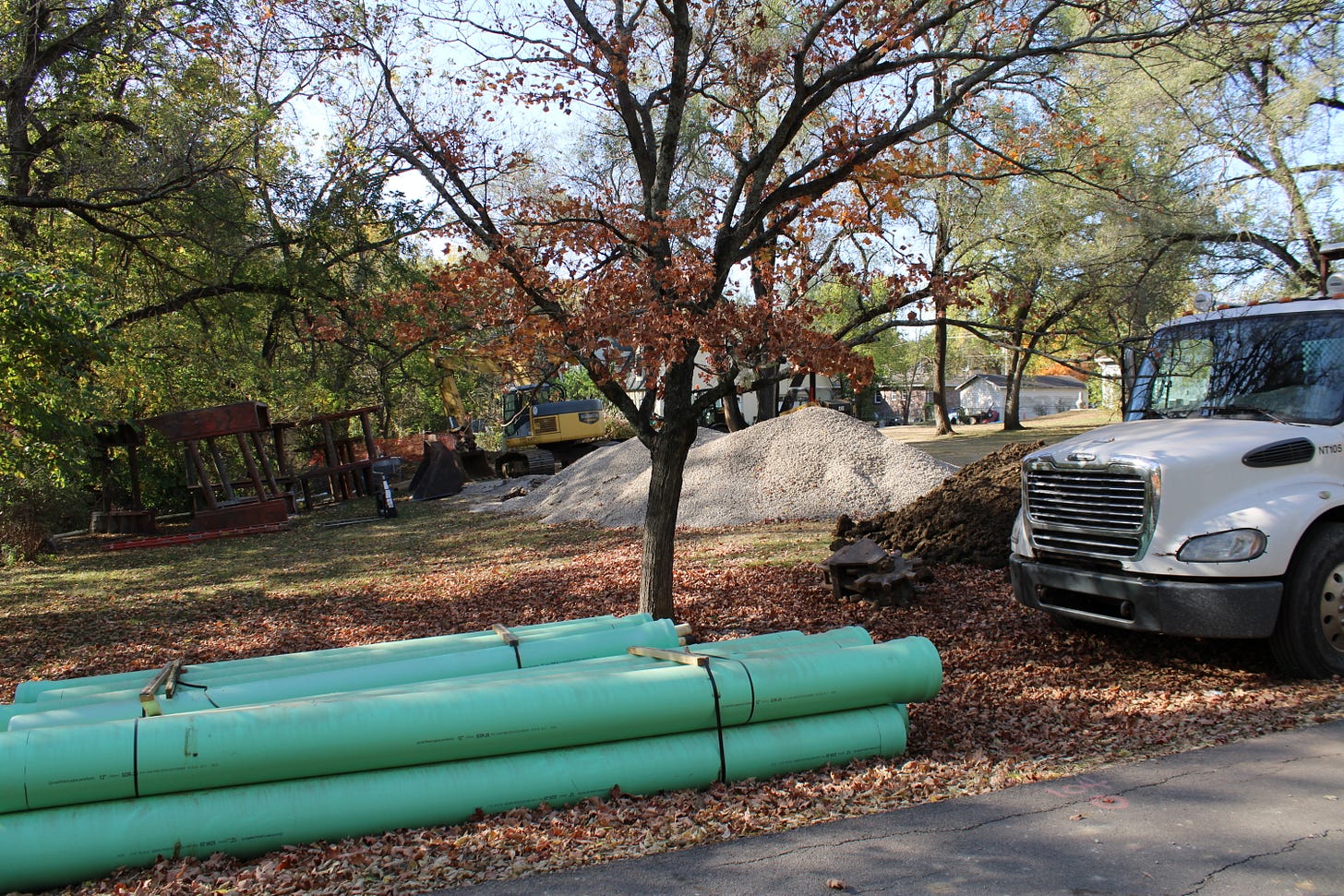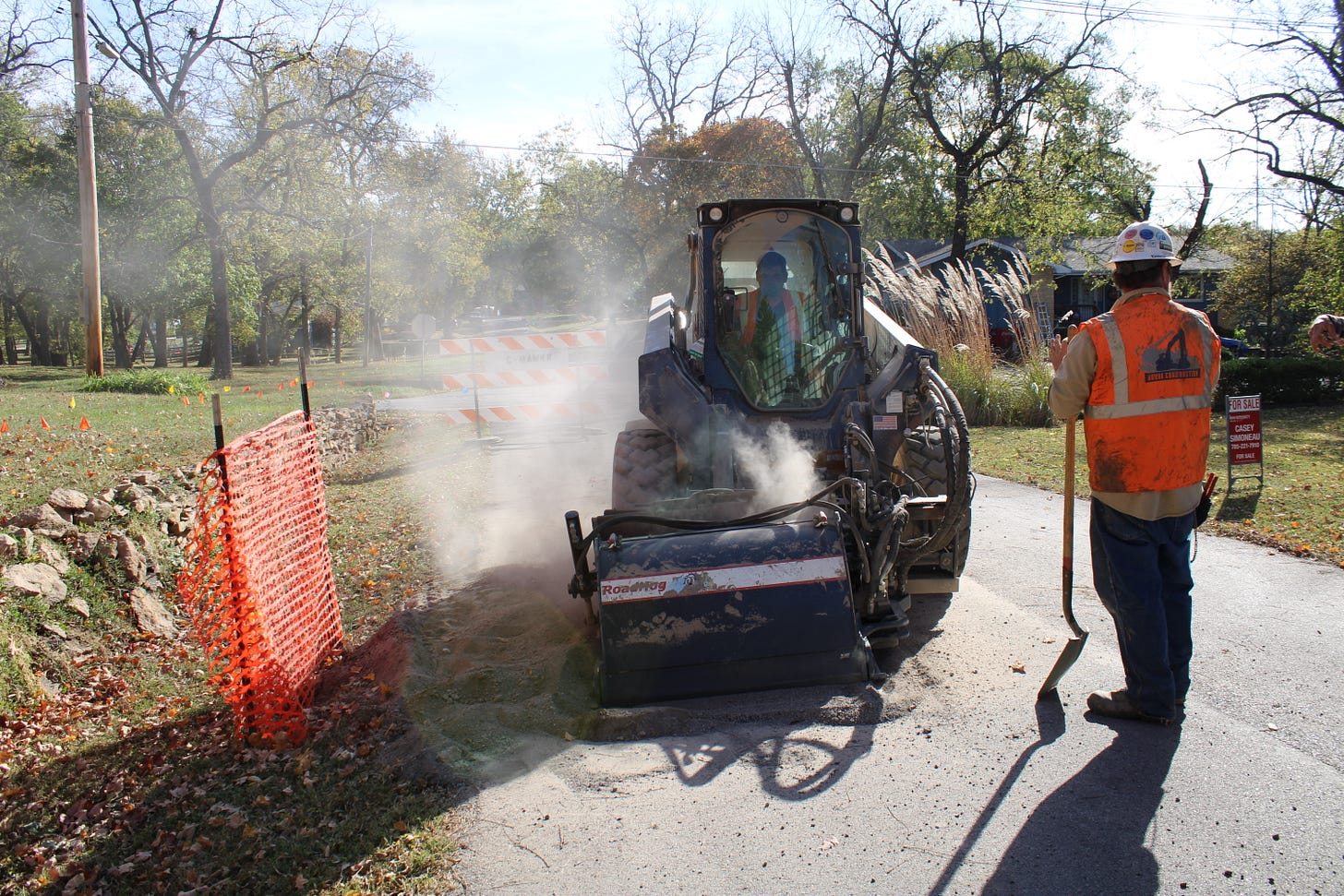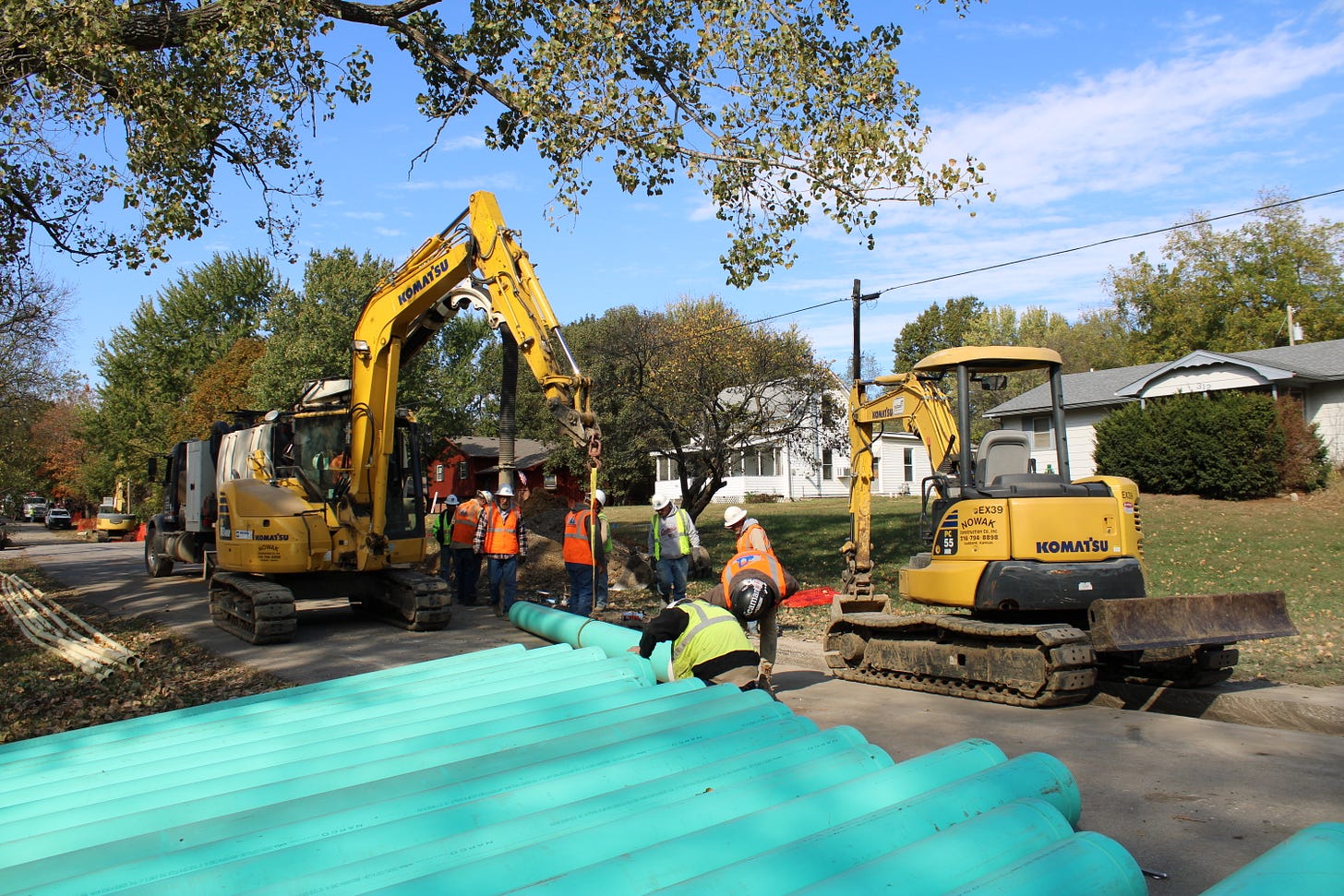Sewer Project Overview
Eastside Sewer Interceptor photos & video
The Eastside Sewer Interceptor Project is one of those “once in a generation” projects that are so big it’s difficult to wrap your mind around the whole thing if you don’t regularly work with sewer pipes.
I was looking for a way to try to understand the project from the outside looking in, so I asked the Nowak Construction foreman to give me a tour. We spent around 3 hours, walked over 5 miles, and drove all over from the Wastewater Treatment Plant out on Orange Street to the intersection of 1st and Santa Fe to get these photos and video footage for you.
This is still only a high level overview, obviously. Much of the work is done underground, which it makes it more complex to see and understand.
Things I’ve learned while observing this project:
Municipal sewers tend to be a patchwork of additions and repairs, made up of different types of pipe. They require different types of repair and maintenance on different sections.
The first step for this project was getting good CCTV footage of the inside of the entire Eastside interceptor - which was a large undertaking all by itself. That gave the team a good look at the problems inside the pipes.
There are 6 crews working all over Baldwin City on this project, doing everything from prep work to pipe installation to final clean up.
No one should need to have their sewer shut off at any point, because it’s pumped around the areas where they are working.
Three different types of pipe work are happening, as appropriate in different areas:
Open trench excavation
Pipe bursting
Cure in place pipe (CIPP)
Manholes are very different things than I thought they were (if I ever thought about manholes at all).
Take a look at the pictures and video below of crews in action from the Wastewater Treatment Plant all the way over to Santa Fe. Got questions? Email lhughes@baldwincity.gov and I’ll see if I can find answers for you.
-Lynn Hughes, Baldwin City Communications Director
Video footage of portions of the project. This part was mainly on Elm Street, and involved pulling a new pipe through an existing pipe (pipe bursting). It was fascinating to watch and will result in dramatically improved infrastructure for the City’s sewer system.














